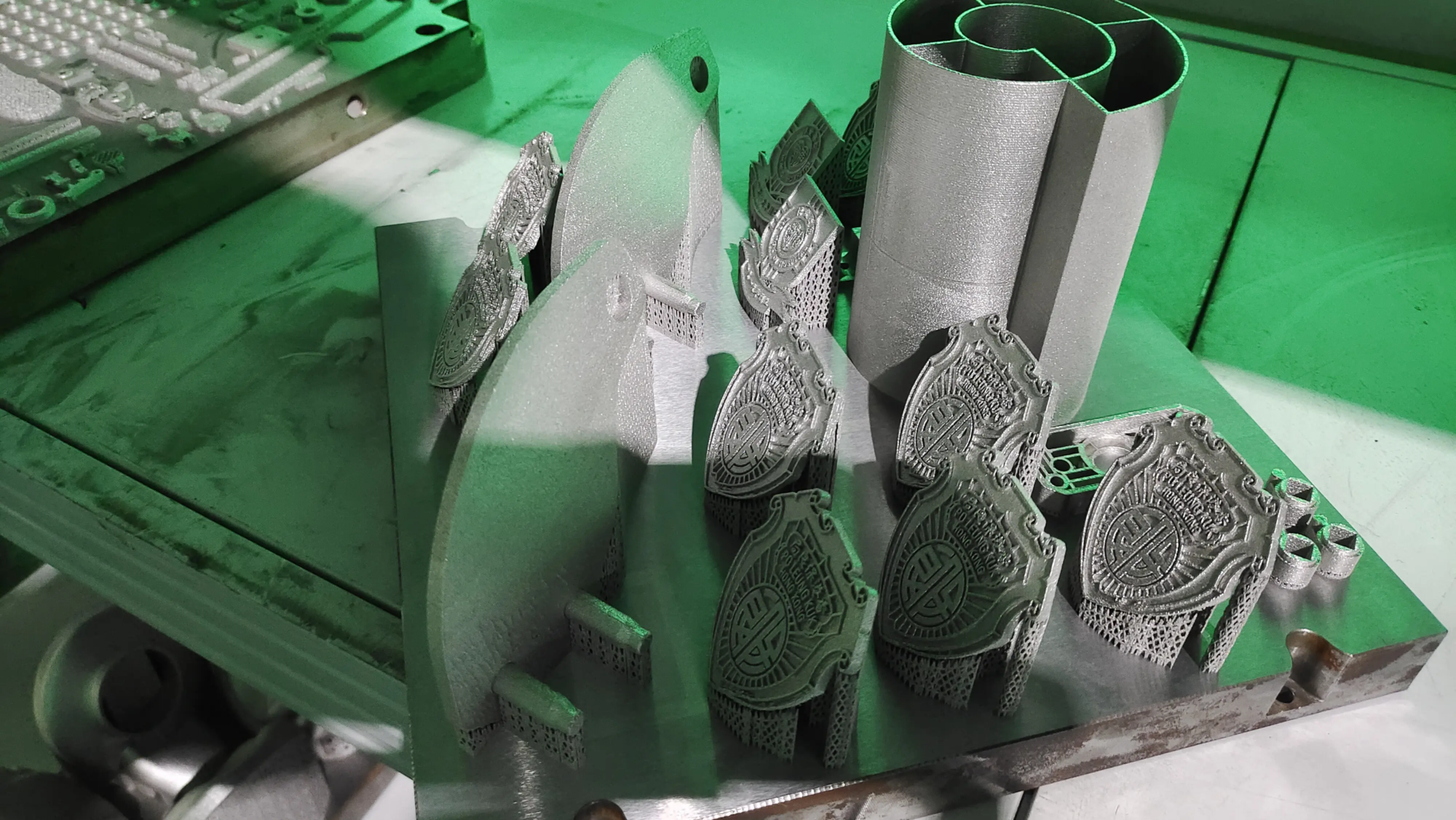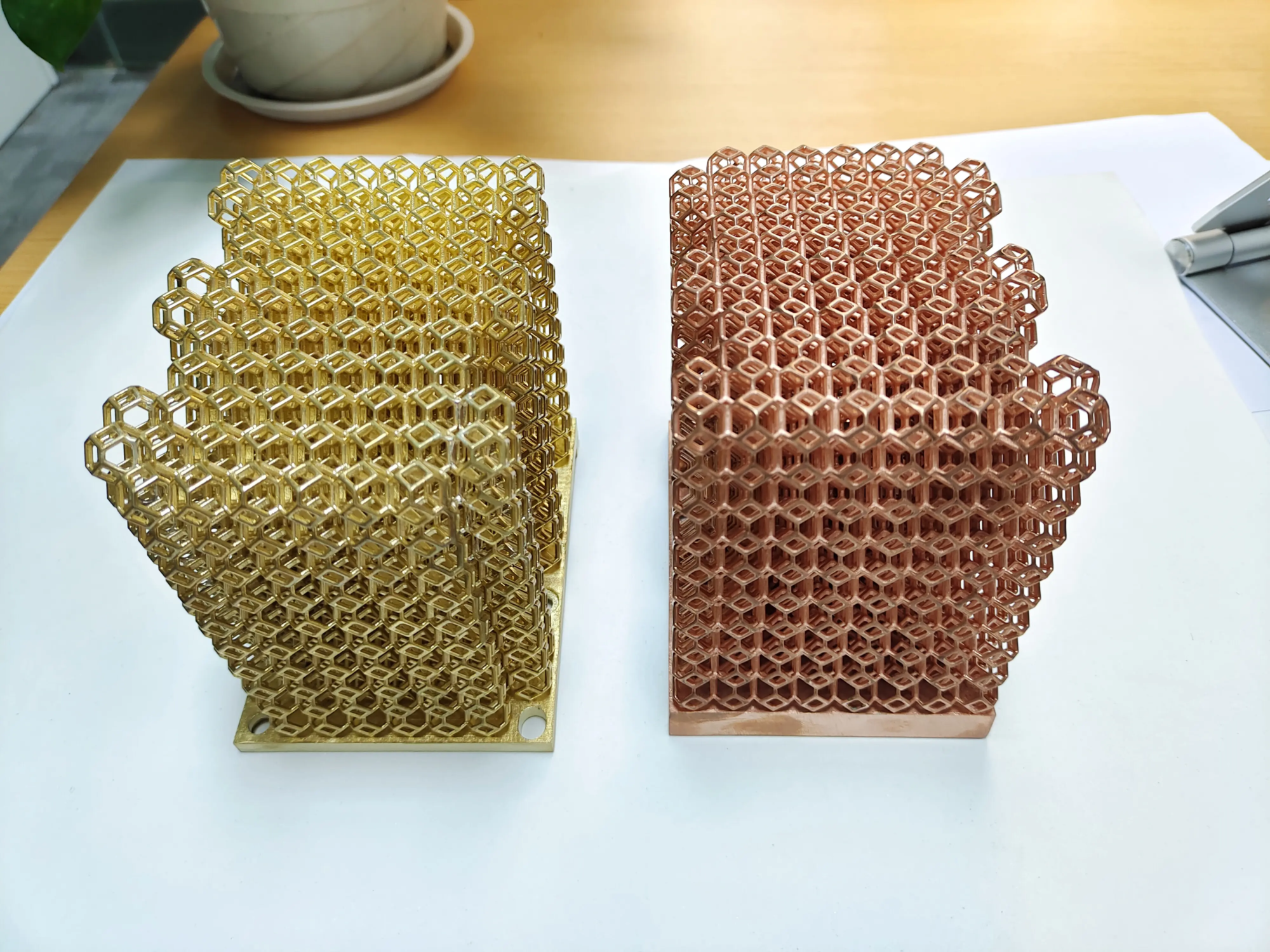Preparation: The transformational capabilities of 3D printing, and why Greatlight stands out
The humble gear is a basic component that silently drives movement in everything from sophisticated robotics and aerospace flight actuators to medical devices and high-performance automotive systems. Traditionally, manufacturing of high-precision gears involves subtraction methods such as rolling or shaping, complex tooling setups and longer lead times. Input metal 3D printing, especially Selective laser melting (SLM)revolutionized how we design, prototype and produce these key components. This guide delves into the world of 3D-printed gears, exploring the features, benefits of technology, and how to work with expert manufacturers like Greatlight to unlock unprecedented advantages.
Beyond Teeth: Why 3D Printing Is Innovating Gears
3D printing provides unique advantages that make it ideal for equipment applications, especially in demanding situations:
- Unrivaled design freedom with complex geometric shapes: Forgot the limitations of regular processing. 3D printing allows you to create gears with previously impossible shapes – internal lattice structures for extremely lightweight, complex topological optimizations for excellent strength to weight ratios, integrated features such as shafts or housings, and even optimized for specific load cases and noise reduction.
- Lightweight without sacrificing power: By placing the material only when needed (e.g., thin mesh, hollow parts), gears produced by SLM may be much lighter than machined gears. This is crucial for aerospace, robotics and automotive applications where every gram saved can be converted into increased efficiency, speed and payload capacity. The inherent strength of dense metal alloys produced by SLM ensures that performance is not compromised.
- Rapid prototype and iteration: Due to tool requirements, it often takes weeks or months to test and perfect gear designs. 3D printing cuts this process. Functional prototypes in the final material, such as stainless steel or titanium, can be generated within a few days. Designers can test and iterate geometry, tooth intervention and performance earlier, greatly accelerating the development cycle.
- Customized and low volume production efficiency: Need a specific gear ratio, abnormal teeth profile or a small batch of professional parts? 3D printing is essentially digital and toolless, which is more economical than the traditional approach of custom design, legacy parts replacement, or low to medium production. Customization becomes easy, fast and cost-effective.
- Performance optimization: Options such as surface textures that improve lubrication retention or tailored microstructure properties implemented by specific laser parameters can be directly constructed into the printing process, beyond what a mechanical surface can achieve.
SLM: Power chamber for metal equipment printing
Despite the existence of various 3D printing technologies, Selective laser melting (SLM) As the gold standard for producing high-strength and high-precision metal gears. Why:
- process: High power lasers accurately melt fine metal powder particles (such as 316 liters of stainless steel, Ti6al4v titanium, Alsi10 mg aluminum, and even tool steel/inconel), fusing them into solid, completely dense metal parts. This density is crucial for gears with continuous cyclic stress.
- Advantages of gears:
- Nearly full density: Ensure strength and fatigue resistance are comparable to that of forged materials.
- Material versatility: Process with a variety of high-performance alloys suitable for demanding gear applications (wear resistance, strength, corrosion resistance).
- High precision: Achievable layer thicknesses (typically 20-50 microns) and complex laser controls can create sharp, accurate tooth profiles necessary for smooth meshing and power propagation.
- Complexity enabler: Working effortlessly with undercuts, internal channels and complex geometries, it is impossible to process through CNC.
Material Important: Choose the right alloy
The choice of metal powder is crucial to gear performance. Greatlight provides expertise in handling a wide range of areas:
- Stainless steel (e.g. 316L, 17-4ph): Excellent corrosion resistance, good strength and polishability. Widely used in various industries.
- Titanium alloys (such as Ti6al4v): Unrivaled strength to weight ratio, biocompatibility and corrosion resistance. Ideal for aerospace, medical and high performance applications.
- Aluminum alloy (e.g., Alsi10mg): Lightweight, good thermal conductivity and decent strength. The perfection that is crucial to weight loss.
- Tool steel (e.g. H13, Maraging steel): Excellent hardness, wear resistance and strength, can be used in high-end, long-life gears.
- Nickel alloys (e.g., Inconel 718): Extreme heat resistance and corrosion resistance in extreme environments.
Greglime can suggest material selection based on your specific requirements: load, speed, environment, wear requirements and cost objectives. Most materials can be quickly sourced and customized.
Improve performance: The key role of post-processing
Original 3D printed gears often require post-processing to meet functional requirements, especially for high-precision grid and load-bearing applications. Greglight’s one-stop service is a key difference:
- Support removal: Carefully remove the metal support structure.
- Relieve pressure/heat treatment: Reduce residual stresses (eg, hardness, toughness, such as solution annealing, aging or quenching/tempering) induced during printing and realization of the desired material properties.
- Precision machining: Despite the accuracy of SLM, critical surfaces such as teeth sides and holes often require machining to achieve micron level tolerances (IT5-IT7) and optimal surface finishes (RA <0.8 µm) for quiet operation and efficient power transmission. Greglight provides internal CNC machining capabilities.
- Surface finish: Options include vibrating finishes for burrs, firing styles for improved fatigue life, for ultra-high precision, polishing or coating applications (e.g., DLC, NI-PTFE) to enhance wear resistance or reduce friction.
- Quality Control: Strict inspections using CMMs (coordinate measuring machines), optical scanners, refiners and material testing ensure that each gear meets specifications.
Why collaborate with 3D printed gears?
Choosing a provider with deep expertise and state-of-the-art features is crucial. Greglight is one of the major rapid prototyping companies in China and a leader in metal 3D printing services: demanding applications:
- Advanced SLM technology: Invest in state-of-the-art industrial grade metal 3D printers to ensure process stability, layer uniformity and consistent high-quality parts output in compliance with aerospace and medical standards.
- Production experience with expertise: In-depth understanding of materials science, laser parameter optimization and gear geometry-specific thermal management to prevent defects and ensure structural integrity. Years of experience solving complex prototype challenges.
- A true one-stop solution: Seamlessly integrated post-processing facilities eliminate the hassle of managing multiple vendors. From file upload to delivery completion, accurate, with precise rear device, Greatlight can handle all operations.
- Quick customization and speed: "Most materials can be quickly customized and handled." Agile production setup enables fast-growing prototyping and production runs, thus accelerating your market time.
- Precise focus: Dedicated to real CNC machining with high precision matching. "Customize your precision fast prototyping parts now at the best prices!" – Provide competitive speed without compromising tolerance or quality.
- Commitment to reliability: Building on dietary principles, Greatlight provides professionalism through technical knowledge, reliable results, and trustworthiness through consistent quality and reliability.
Conclusion: The future of gears, printed today
3D printing powered by advanced SLM technology is changing the landscape of gear design and manufacturing. It unlocks unprecedented design complexity, fast iterations that weight loss and traditional methods cannot match. For functional prototypes and production-ready metal gears, requiring high performance, accuracy and reliability, SLM is increasingly becoming the best choice.
Navigation requires expertise in this technology. Work with professional manufacturers Great It is crucial. They combine cutting-edge SLM equipment, deep materials and processing knowledge, comprehensive in-house post-processing (including precise machining) and a commitment to fast custom solutions position them as ideal partners. Whether you need a complex prototype or a batch of high-precision, finished gears, Greatlight offers technical capabilities, speed and quality assurance to drive your innovation forward.
FAQ: Your 3D printing equipment question has been answered
-
Are 3D printed metal gears as strong as machined gears?
Yes, when printed using high-quality SLM equipment such as Greatlight’s and correct handling (including optimized parameters and proper heat treatment), the parts achieve a nearly dense structure with tensile strength and are even more comparable or even superior to cast or machining equivalents in the same alloy. Their performance depends to a large extent on design optimization, print quality, and post-processing.
-
What are the main limitations of 3D printed gears?
Although rapidly developing, limitations include:
- Dimension constraints: Printing mechanism volume limits maximum gear diameter/size.
- Surface finish: The fixed surface is rougher than the precise ground gear. High performance applications often require machining/polishing.
- Large cost: For very large production runs, traditional quality production methods may be more cost-effective (although this gap is narrowing).
- Material characteristics: Anisotropic behavior (slight intensity variation based on the construction direction) may require design consideration. Greatlight optimizes orientation and heat treatment to mitigate this.
-
What is the typical tolerance that SLM gears can achieve before and after machining?
- first aid: SLM machine/process control is standard within ±0.1mm (±0.004 inches). Gremplys usually achieves stricter consistency.
- After processing: Critical surfaces (drilling, teeth) can achieve CNC accuracy tolerances (IT7 to IT7), while surface roughness RA <0.8 µm or better, suitable for smooth operation and load transfer.
-
How long does it take to get 3D printed metal gear from Greatlight?
Delivery times vary according to complexity, size, material and post-processing requirements. However, for prototypes and small batch orders, Gremphill emphasizes speed:
- Simple prototype: days of reception.
- Complex gears with machining: usually cited within 1-2 weeks. Their "Quick custom processing" Ability is the core force.
-
What file format do I need to provide?
Standard grid formats (such as .stl or .obj) are usually used. In fact, solid modeling files such as .Step or .iges are actually preferred for complex machining plans.
-
Can Greatlight help with 3D printed gear design and optimization?
Yes. To leverage their expertise, Greatlight’s engineering team can assist in the design of additive manufacturing (DFAM). This includes optimizing geometry, printability, reducing support, lightweight through lattice design, proposing ideal strength or surface finish orientation, and material selection guidance.
- Do you guarantee the performance of 3D printed gears?
Performance depends to a large extent on the specific application and operating conditions. While Greatlight ensures that the gear meets agreed dimensional specifications and material requirements (e.g., hardness, density), functional performance verification under real-world loads usually falls on the end user. They ensure that the parts are made to the highest quality standards to provide the best foundation for success. Collaborative testing protocols are always encouraged.





